Brendan I. Koerner's Blog, page 23
April 19, 2012
Biblical Wisdom
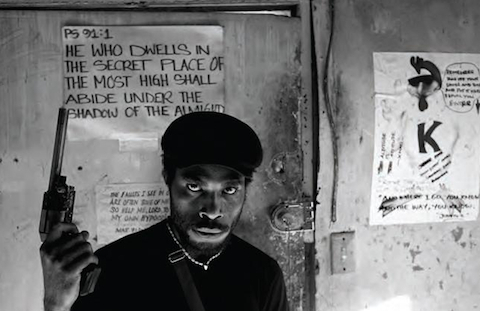
I highly recommend this set of Papua New Guinea images, by the Australian photographer Ben Bohane. The one posted above (larger version here) is a personal favorite for the way it juxtaposes the firearm with the quote from Psalms. I read that quote as so sinister in this context, but alternate translations give quite the opposite effect. Wish I could know whether the raskol who made that sign deliberately chose a translation that would fit with his crew’s nihilistic world view. Or if whatever Bible he stumbled across just happened to feature a version of the quote that was cosmically appropriate to his desperate circumstances.
More chilling photographs of raskols here and here.
April 17, 2012
Flying Too Close to the Sun
If all had gone according to plan, I would’ve handed in the complete first draft of my next book today. But, much to my discredit, I’m stil a whole chapter away from completion, plus a few more days’ worth of revisions. I can take some small comfort, at least, in knowing that I’m probably not the first writer to miss a major deadline. I mean, hey, we’re all still anxiously awaiting that runaway bride’s memoir, right?
April 16, 2012
One Man’s Pest, Another Man’s Steak
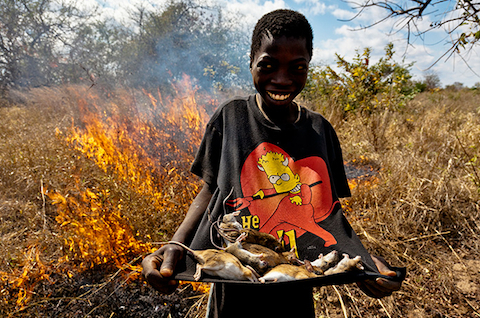
Microkhan Jr. has reached the age at which he’s starting to ask about food taboos—like, why we eat pigs but not horses (a recent dinnertime inquiry). In straining to explain the nuances of societal dietary preferences, I thought of this incredible photo essay on the rat catchers of Mozambique, who provide that nation’s blue-collar workers with an affordable source of meat—albeit one that many Americans might find icky. Yet Mozambique’s appetite for this protein source is such that the rodent harvest is causing serious environmental damage:
Albinio Matias, a Mozambican farmer, lost his daughter, Cassula, and his home to wildfires, which also damaged his crops for four consecutive years. “The fires were set by youngsters hunting for rats, and because our houses were close to the weeds they caught fire and I lost everything,” said Matias, who lives in the Macossa district of Manica Province in central Mozambique. Hunters would start fires to flush out rodents from the forests and the bush to eat, and the blaze would often get out of hand.
Around 70 percent of Mozambique’s 20 million people live in rural areas where every year thousands are displaced or lose their possessions, homes and crops to these fires. Manica Province’s Forest and Wildlife Services said 43 wildfires were caused by rat hunters in 2007; in 2008 that figure rose to 60 and led to 15 deaths and the displacement of 200 families.
This is definitely an instance in which controlled production is far preferable to the “free-range” approach. But while our species has proven quite adept at wiping out rat populations, we’ve had a much harder time breeding them for meat—at least not profitably. Some reasons why can be found here; suffice to say that rats aren’t quite as compliant as, say, chickens when it comes to determining gender and organizing efficient breeding schedules.
Also, as detailed here, rats are actually quite sensitive to environmental toxins such as pesticides. That detail surprised me: You’d think any animal capable of thriving off congealed grease in the sewers of Washington D.C. would let a little aldicarb slide right off their backs.
The photographer behind the rat-catching series, Vlad Sokhin, is a gem, by the way; check out more of his work here.
April 12, 2012
A Questionable Deterrent
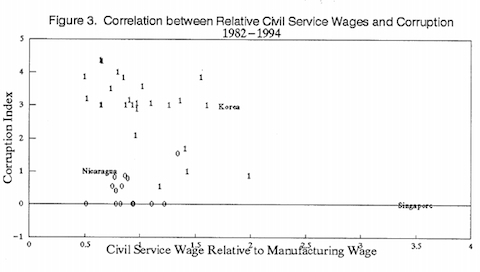
In countries where the rule of law is less-than-robust, traffic cops can often best be classified as entrepreneurs rather than law-enforcement officials. Their main concern is not keeping the streets safe, but rather extracting bribes from unfortunate drivers—a pursuit that has made some Zambian policeman rather wealthy by that nation's standards:
Home Affairs Minister Kennedy Sakeni has wondered how a traffic officer can amass wealth worth K1 billion and yet his salary was only below K3 million. Mr. Sakeni says his office is aware that some of the officers make as much as K30 million per week which is never deposited into the government treasury but instead pocketed by themselves.
If my math is correct here, then, a Zambian traffic cop's actual income is approximately 333 times greater than his official income. So how can the government coax those police into giving up such filthy lucre, save for prosecuting each and every one to the fullest extent of the law?
The convenient answer is that the cops' salaries must be raised in order to reduce the temptation to extract bribes. But by how much? There is simply no way that the government can afford to replace all of the incomes that a cop would lose out on by going legit. How much of an increase will set a corrupt official on the straight-and-narrow?
There is quite a bit of debate on this point. This landmark IMF paper from 1997 (PDF) suggests that a public-sector official's wages must be two to three times greater than that of his private-sector counterpart—a laughable proposition here in the U.S., of course, where civil-service salaries always lag. This case study from Tanzania (PDF), by contrast, concludes that even a massive salary bump doesn't always do the trick:
For a [revenue office] employee who is used to get bribes of TSh 20–30,000 daily, a tenfold increase of his salary from the present level will not make him desist from demanding and accepting bribes. The situation worsened even more due to the erosion by inflation of the initial pay rates for TRA staff, since nominal wages between 1996 and 2000 remained unchanged.
The ultimate solution probably has less to do with wages than with developing a sense of common purpose. But that's a slow fix that requires leadership by example. The lowliest official has no incentive to change his ways when the highest is taking suspiciously frequent ski vacations in Gstaad.
April 10, 2012
Rage in Port Moresby
As I re-apply nose to grindstone for the book's sake, check out this footage from yesterday's mass protest in Port Moresby. Despite its denials, the current Papuan regime is clearly intent on delaying this summer's scheduled election, perhaps in the hope that Sir Michael Somare's influence or health will diminish. The Papuan people are rightfully getting tired of such electoral hijinks.
April 9, 2012
The Fate of a Rajneeshee Rolls
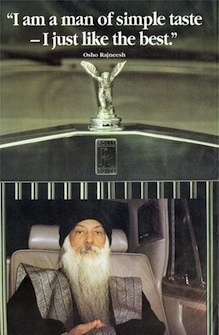 Anyone who takes the time to comment on Microkhan is pretty much on my cool list for all eternity. But I reserve extra-special love for those who help solve the mysteries this project occasionally explores. And so let me offer a cosmically enormous high five to the reader who recently responded to this January 2011 post about the Rolls-Royce fleet once owned by Bhagwan Shree Rajneesh. I mentioned that 84 of the cars were purchased by a Dallas auto dealer, who was backed by a doomed savings and loan. It wasn't immediately clear to me whether the dealer ever managed to offload any of the cars, but apparently he found at least one taker for the notoriously gaudy vehicles:
Anyone who takes the time to comment on Microkhan is pretty much on my cool list for all eternity. But I reserve extra-special love for those who help solve the mysteries this project occasionally explores. And so let me offer a cosmically enormous high five to the reader who recently responded to this January 2011 post about the Rolls-Royce fleet once owned by Bhagwan Shree Rajneesh. I mentioned that 84 of the cars were purchased by a Dallas auto dealer, who was backed by a doomed savings and loan. It wasn't immediately clear to me whether the dealer ever managed to offload any of the cars, but apparently he found at least one taker for the notoriously gaudy vehicles:
I know where one of the cars ended up: in my mother's driveway. Yes, she purchased Rajneesh's 1982 Silver Spur in possibly the ugliest baby blue one could imagine. It had what we know as the gold package, hood ornament and all – dipped in gold. I remember reading through the owner's manual as a 15 year old and seeing the oringinal warrnanty card that read Rajneesh Investments. My mother was, as the time, president of the now defunct KIAB, Channel 23 in Dallas. This would have been her third Rolls Royce. She was as gay as a french horn and the cars fit her well (I was an adoptee).
I am still looking for confirmation on what happened to the "green-and-gold-lace number with tear-gas guns secreted beneath the fender." Here's to hoping this post teases out another tipster.
April 6, 2012
Oviraptor philocerataps
Taking Microkhan Jr. to the dinosaur museum today. I think he's finally old enough to appreciate the true grandeur of a sauropod.
April 5, 2012
Personal Incentives
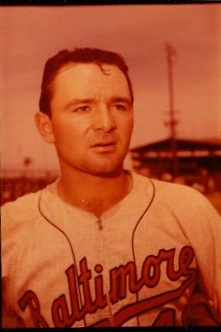 Continuing on with our semi-regular practice of shouting out old Sports Illustrated stories that have stuck in our mind, I'd like to call your attention to this "Where Are They Now?" piece about the fabled Steve Dalkowski—a man who recently popped to mind when news of Ryan Leaf's latest travails broke wide. The thumbnail sketch on Dalkowski is that he's the greatest left-handed pitcher who never was—a wild fireballer who awed the great Ted Williams, yet was undone by alcoholism before he could truly make his mark in the game. As of last report, he resides in an extended-care facility, the victim of dementia caused by his longtime chemical dependence. A straight-up tragic tale any way you cut it.
Continuing on with our semi-regular practice of shouting out old Sports Illustrated stories that have stuck in our mind, I'd like to call your attention to this "Where Are They Now?" piece about the fabled Steve Dalkowski—a man who recently popped to mind when news of Ryan Leaf's latest travails broke wide. The thumbnail sketch on Dalkowski is that he's the greatest left-handed pitcher who never was—a wild fireballer who awed the great Ted Williams, yet was undone by alcoholism before he could truly make his mark in the game. As of last report, he resides in an extended-care facility, the victim of dementia caused by his longtime chemical dependence. A straight-up tragic tale any way you cut it.
What I remember most about the SI is one detail in particular—a classic example of a single observation that lays bare the essence of a character. The one about Dalkowski is the kicker to the paragraph:
At midseason in 1964, Baltimore released Dalkowski. He hung on for two seasons with the Pittsburgh Pirates' and the Los Angeles Angels' organizations. In Bakersfield in 1965 he married a schoolteacher named Linda Moore, but they divorced two years later. Soon he was in the California fields, picking cotton and sugar beets, beans and carrots. Dalkowski's drink of choice was cheap wine, which he would buy when the bus stopped on the way to the crop field. Often he would place a bottle in the next row as motivation.
Makes me think that the rewards we all set up for ourselves really speak volumes about our core desires—desires that we may not wish to reveal to others, at least not overtly. When it comes right down to it, human psychology is astonishingly hamster-like.
April 4, 2012
A Humble Request for Help
As I steal another day to focus on the book—my deadline is less than two weeks away—I was hoping to ask y'all for a bit of help with a research matter.
Let's say I walked into an American embassy or consulate in the spring of 1978, claiming to have lost my passport while traveling. What identification, exactly, would I have been asked to provide in order to obtain a replacement passport? You have no idea how hard it's been to get a concrete answer to this question. And while I'm sure I could glean what I need from the State Department's archives, I'd rather not invest the time/money in a Bolt Bus trip down to Washington D.C. Fingers crossed that someone in the Microkhan audience can provide a little insight, or at least point me in the direction of a resource I can tap from the comfort of my global headquarters. Thank you in advance for the helping hand.
April 3, 2012
The Lord of Chonda-Za
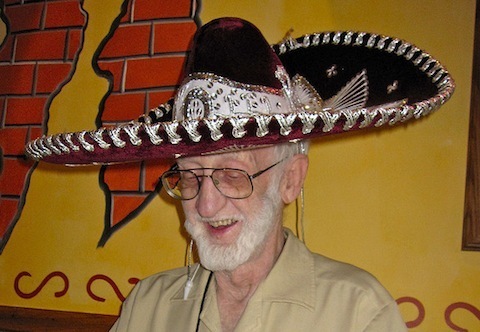
For those of us who lack law degrees, reading judicial opinions can often be a major slog. Those who occupy the bench favor a prose style that is, to be charitable, a bit on the dry side; yarn-spinning is not their forte. Yet every once in a while, I stumble upon a ruling that crackles like the fine narrative non-fiction. This 1992 circuit-court opinion in the matter of U.S. v Lowry is an excellent case in point.
Instead of summarizing the background, how 'bout we let Judge John Louis Coffey set the scene:
In the early 1960s Donald Lowry published a book about his travels through Mexico entitled Mexico: Bachelor's Paradise. The response to the book convinced Lowry that there were many men out there who lacked self-confidence and had trouble with relationships, and that he could help these men by establishing a mail-order lonely hearts club. He followed through on this idea and founded such a club in 1965. After running this club for a few years, Lowry incorporated his business under the name of Col International, "Col" being an acronym for "Church of Love" (hereinafter "COL").
It is the premise of the COL that lends spice to the script. Using mailing lists acquired from men's magazines and various lonely hearts clubs, Lowry mailed informational packets to thousands of men describing the COL and its purpose. These letters claimed that the COL was founded in Mexico in 1965 by a teenage girl, Maria Simona Mireles, who now went by the name "Mother Maria". According to the letters Mother Maria had been called to establish a new Garden of Eden, a valley paradise to be known as "Chonda-Za". In Chonda-Za, COL members would join with Mother Maria and an entourage of beautiful young women known as the "Angels of Love", living the rest of their lives in utter peace and fulfillment. Neither Rome nor the Garden of Eden was built in a day, however, and at present Chonda-Za was still a shimmering dream, though progress was being made. In the meantime, the mailings revealed, Mother Maria and the Angels were living on an old farm near the western Illinois town of Hillsdale, frolicking in a bucolic encampment known as the "Retreat". At the Retreat the Angels were purifying themselves for entry into Chonda-Za and perfecting a free and open pastoral lifestyle, uninhibited by the moral code and strictures that modern society places on male-female relationships. This would be the lifestyle enjoyed by all in Chonda-Za.
From this idea sprang perhaps the most lucrative lonely-hearts scam in American history, one that eventually raked in an estimated $31.5 million. Lowry and his chief accomplice, Pamela St. Charles, did this not only by collecting membership fees from men who wished to retire to Chonda-Za, but also by coaxing their marks into contributing to special funds for the upkeep of the fictional paradise. Coffey explained the mechanics:
The Angels, you see, had needs, and Lowry sent letters notifying the members of these needs and asking for their financial assistance. For example, the Angels needed money for "Mother Maria's Garden Fund", which they used to grow fruits and vegetables to tide them through the long Illinois winters. The Angels also needed funds to repair Angel Audrey's car, because she was the only Angel allowed to travel into town to purchase supplies for the Retreat. Further, emergency funds were solicited from time to time, as when Angel Susan allegedly was in an auto accident and necessitated hospitalization. Other needs included: money to pay the taxes on the Retreat, a new motor for the water well at the Retreat, a surprise gift for Mother Maria, a new coat for Mother Maria, a vacation for the Angels, sewing machines, typewriters, and, last but not least, money to buy the property to build Chonda-Za.
The members responded generously, lest the dream of Chonda-Za be crushed by their parsimony. Between 1982 and 1985 Col International took in $4.5 million dollars. On top of that there were gifts galore–money, jewelry, stereos, food, clothing–so many that Lowry had no place to keep them and had to get rid of them by giving them to employees, holding a sidewalk sale, or selling at a store he opened called "Saver's Haven". Needless to say, the cash and the funds from the gifts went into Col International's coffers; the fictional Angels never demanded their due, and Lowry and his associates kept all the money.
Needless to say, the only reason that the Seventh Circuit Court go involved is because the Chonda-Za scam was eventually busted by the Feds. (The definitive account of the Lowry's fall can be read here.) Lowry was sentenced to 27 years in prison, though he was released in 1998. As you can see from the photo above, taken at his 80th birthday party in 2009, the Lord of Chonda-Za appears to be doing well these days—and, judging by that sombrero, still retains his deep interest in Mexican culture.
What fascinates me most about Chonda-Za is not the gullibility of the marks, but rather the effort that Lowry put into building and maintaining the illusion. Do you think it's easy to run a fictional sex paradise? As Coffey noted, think again:
To maintain the illusion that the Angels actually existed, however, Lowry created a different background, personality, and writing style for each Angel (for example, some Angels wrote simple, All-American letters, others (like Mother Maria) used broken English, and others used improper and off-color language). He also used different stationery for different Angels and even closed each letter with a false signature from the "authoring" Angel.
Were a Lowry a young man today, he could surely do wonderful things with some fake Twitter accounts.
(Photo via Nuevo Anden, who appears to be one of Lowry's nephews)




